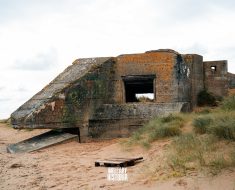Cannons have been among the most transformative weapons in military history, changing the nature of warfare from the late medieval period onwards.

Emerging in Europe during the 14th century, these large, metal artillery pieces used gunpowder to launch projectiles over long distances, capable of breaching walls, sinking ships, and dominating battlefields.
Europe
Early cannons were cumbersome and often made from wrought iron or bronze, with simple designs that fired stone balls.
Accuracy was limited, but the psychological impact was immense…the thunderous roar and the destructive potential of a cannon could break both fortifications and morale.
By the 15th and 16th centuries, improvements in metallurgy and gunpowder allowed for smaller, more reliable, and more powerful cannons, including the famous culverins and bombards used in sieges.
At Sea
Cannons played a pivotal role in naval warfare, where ships were equipped with rows of guns that could fire broadsides to devastate enemy vessels.

During the Age of Sail, fleets such as those of Britain, Spain, and France depended heavily on cannon firepower to assert naval dominance. On land, cannons gradually replaced traditional siege engines like trebuchets and catapults, enabling armies to reduce castles and city walls that had been considered impregnable for centuries.
The 18th and 19th centuries saw further refinement, with bronze and cast-iron cannons becoming more standardised, and the development of rifled barrels significantly improving accuracy and range.
By the time of the American Civil War and the Napoleonic Wars, cannons were highly mobile and could be deployed strategically across the battlefield, firing explosive shells as well as solid shot.
The End?
Even into the 20th century, cannons remained central to military power.
Tanks, battleships, and aircraft all mounted versions of the cannon, adapted for modern warfare. While missiles and other advanced weapons have largely supplanted them, cannons still serve crucial roles in both artillery and anti-aircraft systems today.

From stone-throwing bombards to modern high-velocity artillery, the cannon’s development illustrates humanity’s relentless drive to harness fire and metal for both offence and defence.
They reshaped battlefields, altered military strategy, and left an enduring mark on warfare across centuries.






